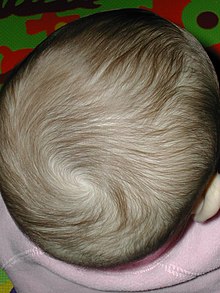Head is a kind of spherical surface covered with hair. Hair grows in all the directions. When you comb the hair, you are trying to flatten the hairs smoothly all over the head. In this process, there will be at least one point in the head which cannot be covered with hairs or at least one tuft will be there. Or the hairs will stand straight at one point.
In short,"when you comb the hairs, there will be one null point." This is called "hairy ball theorem".(HBT)
Wind flowing over the earth is similar to the hairs flowing over the head. Suppose the wind flows from East to west on the globe, there will be two null points- North pole and South pole.
In a cyclone, the air whirls around. At the centre of it, no air flows- a null point called eye of the cyclone. Logically, the wind cannot cross over the 'eye'. If it does, it will disturb the whirling wind. So there is a calm at the centre of the storm.
This topic arises, when the vectors are applied to topology in Math.
Consider a rotating disc (DVD). when you move from the outer edge to center of the disc, the speed of the points (in the disc) gradually decreases and no motion at all at the center point. This can be compared with HBT.
